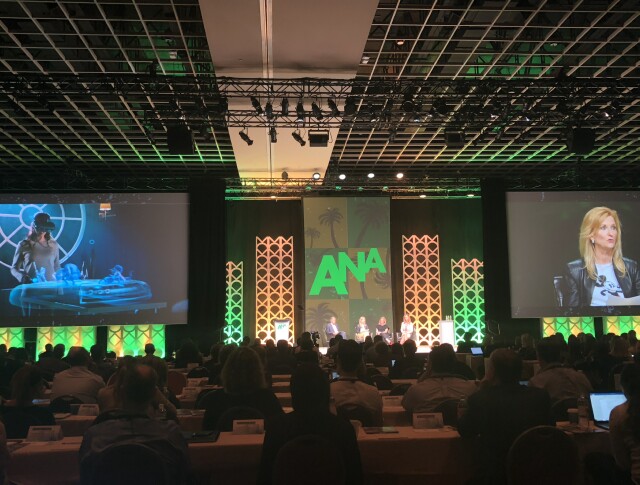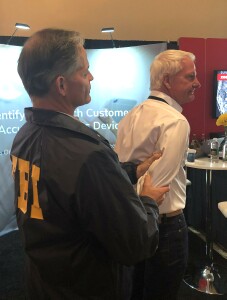ANA Masters of Marketing: Lessons in Taking Control

The 2018 ANA Masters of Marketing conference was attended by CMOs, media decision makers and industry insiders, and the agenda was filled with sessions covering the latest in marketing trends, making it a must-attend event for anyone with a forward-facing media eye. Of the many sessions I attended, a theme that seemed to emerge was one of “taking control,” evidenced by the words of some of the brand marketers that are leading the way.
Taking Control of Digital Issues
ANA Chief Executive Officer Bob Liodice stated, “Just 25% of CMOs’ digital media investment reaches target audiences. This atrocity represents more than $20 billion of marketing waste, inefficiency and ineffectiveness.” How can marketers change the digital narrative? Unilever’s Vice President, Media and Consumer Engagement, Rob Master, and Bank of America’s Senior Vice President, Customer Engagement and Media Investment, Lou Paskalis, urged brands to control their destiny by proactively defining their own quality digital ecosystem with terms that meet their needs.
Another way for marketers to take control is to request the data they need. Paskalis recommended marketers demand that the social platform giants like Google or Facebook provide the data advertisers need to optimize their campaigns. There’s no room for passivity when it comes to the information marketers should be entitled to have.
Take Risks (But Don’t Go Too Far)
Progressive Insurance’s Chief Marketing Officer, Jeff Charney, lauded the risk-based marketing efforts that have led to five straight years of record growth for the company. To others he said, “Across the industry marketers are not taking risks. It pains me. We have gone into creative hibernation.”
One reason his brand has been successful? Progressive has formed an in-house creative and media buying team. “The best marketers go close to the edge, but they do not go over,” he said. “Overthought is too cold. No thought is too hot. If you are appropriately thoughtful, you are just right.”
While creative risks might be encouraged, marketers have to be vigilant in their media agency practices, too. In one of the most striking statements about media trolling, Founder and Chief Executive Officer of LUMA Partners Terry Kawaja wore an FBI jacket to the conference (photo below), reminding everyone of the current investigation into agency media-buying practices. Of this attention-getter Bill Duggan, Group Executive Vice President of the ANA, said Kawaja’s jacket might scare some he passed in the conference hallways given the criminal, fraud and conspiracy charges agencies could face for inappropriate business practices.
agencies could face for inappropriate business practices.
Risk is worth taking, especially in creative, but media-buying best practices should always be kept in mind. They not only protect the brand but the consumer as well.
Consider Going In-House
Progressive Insurance’s in-house creative team serves as a good example for others as the in-house model experiences a resurgence. The ANA reports 78% of marketers have some form of in-house agency, up from just 58% five years ago. Matt Weiss, Managing Director at Huge, said, “The debate rages whether talent want to move in-house and whether the creative is as good as agency work.” Hershey Food Corporation Chief Marketing Officer, Jill Baskin said her in-house content studio can pump out content more quickly.
The perks of moving in-house are clear: More room to take chances with creative and a quicker path to get messaging to market. At Westwood One, we’ve seen this method at work. Our in-house studio capabilities allow us to swiftly address client needs with innovative and quick creative production and distribution.
Consumer Expectations are Higher Than Ever Before
Marketers cannot forget that consumers are an integral part of the marketing equation. To understand marketing is to understand the evolution of the consumers’ needs, and today those needs are more involved than in previous years.
Jill Estorino, Executive Vice President, Global Marketing and Sales at Walt Disney Parks and Resorts, spoke from her experience at Disney, citing how her consumers are empowered and have high expectations. “We have passionate consumers, and they are telling us that they need to be a part of the storytelling process and developing content, and we’re embracing that and opening up,” she said of the current Disney trend.
Progressive's Charney runs his department like a TV network and similarly concentrates on the consumer with the “three Cs” of great marketing, putting the focus on great Characters that make great Content and placed in the right Context.
Radio in the Mix
The radio industry showed up as the “right context” as part of the marketing mix in the creative showcased by Charney. As an example of embracing the three Cs, Charney played one of Progressive’s radio spots called “Curse Like a Sailor.” It was a powerful and real illustration of a brand that has been a long supporter of the medium using audio and the three Cs in a risky yet still impactful way.
The RAB was also on hand during the conference as an exhibitor, displaying key insights which showed that in addition to being America’s No. 1 reach medium, radio could also deliver double-digit increases in online and in-store traffic.
Voice Technology Will Lead to a Customized Consumer Experience
Geoff Ramsey, Chief Content Officer and co-founder of eMarketer, discussed technology trends he’s seen and the implications for the marketplace. When discussing the perks of voice-activated technology, as reported by AdWeek, Ramsey stated, “It’s capable of parsing massive, gazillion amounts of data that no human can possibly do.”
This is an opportunity for brands who want to create highly customized moments for consumers. Nearly 50 million Americans own a smart speaker, according to recent data released at Advertising Week. As we at Westwood One expand our voice app work into co-produced apps for our national brand partners, the ability to utilize data to create meaningful interactions that speak to the individual consumer and answer the needs of the brand is incredibly impactful.
Brands Should Consider the Importance of Trust and Purpose
Focusing on how consumers feel about a brand on these measures can yield positive results. FedEx, Ancestry.com and eBay all extolled the importance of brand purpose. “Brand purpose is just the beginning, not the end,” Ancestry.com Chief Marketing Officer Vineet Mehra asserted. “You’ve got to find a way to take your purpose, operationalize it and use it to drive momentum and grow your business.”
eBay Chief Marketing Officer Susan Deering agreed. “You cannot be a dynamic brand if you do not know what your brand stands for and the purpose that you drive,” she said. “It’s important to have a clear understanding of the brand’s direction and bring the consumer into that journey.”
Five days with the marketing industry’s strongest voices gives us clear marching orders: Take control, both in matters of creative and data, and let consumer expectations guide us in taking more risks as we look to foster a greater sense of brand loyalty and trust. With an expert hold of creative best practices, the Westwood One ROI Guarantee and a recently announced partnership with leading voice tech developer XAPPmedia, we’re ready to move forward armed with these ANA learnings.
Click the social buttons above or below to share this content with your friends and colleagues.
The opinions and points of view expressed in this content are exclusively the views of the author and/or subject(s) and do not necessarily represent the views of MediaVillage.com/MyersBizNet, Inc. management or associated writers.


